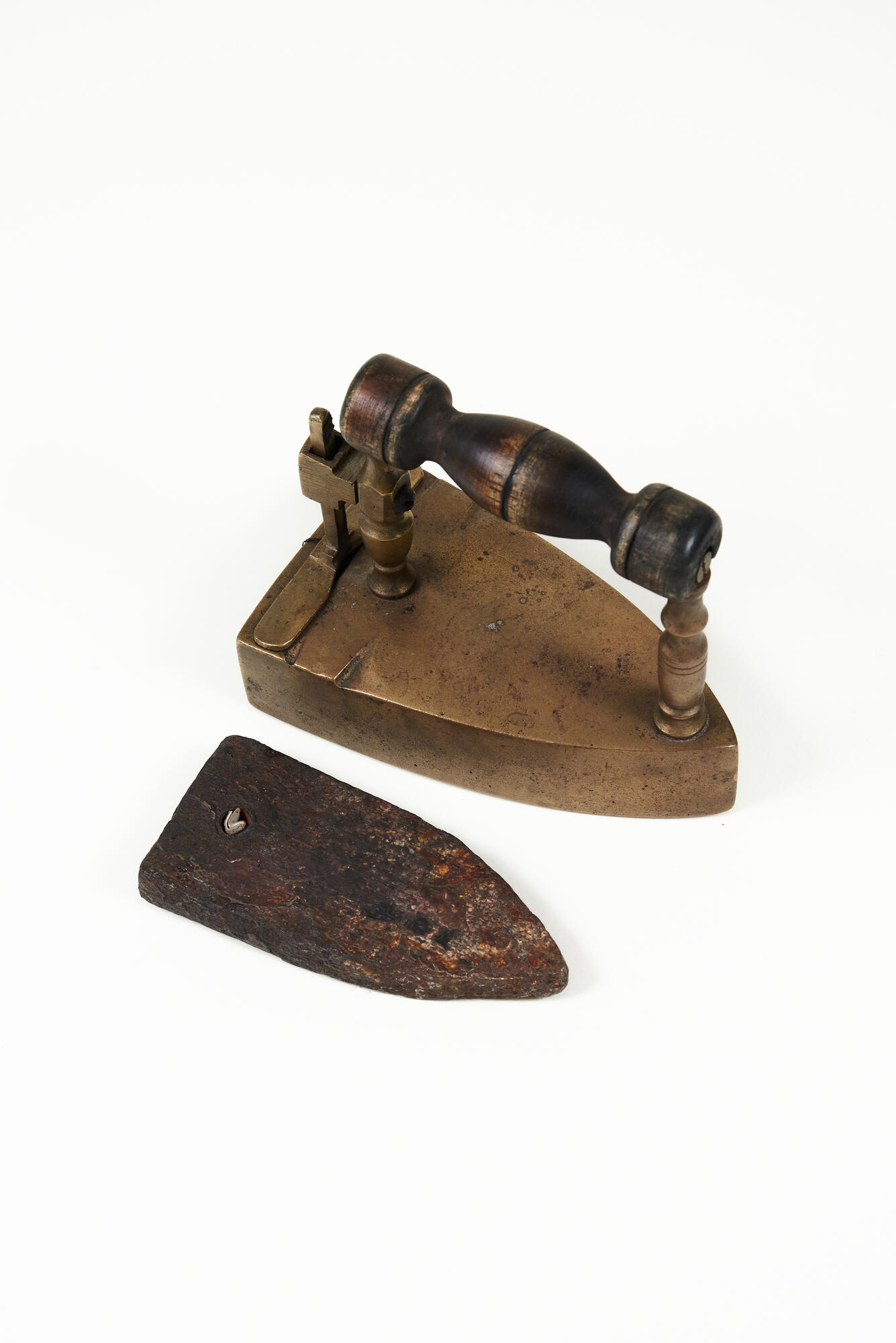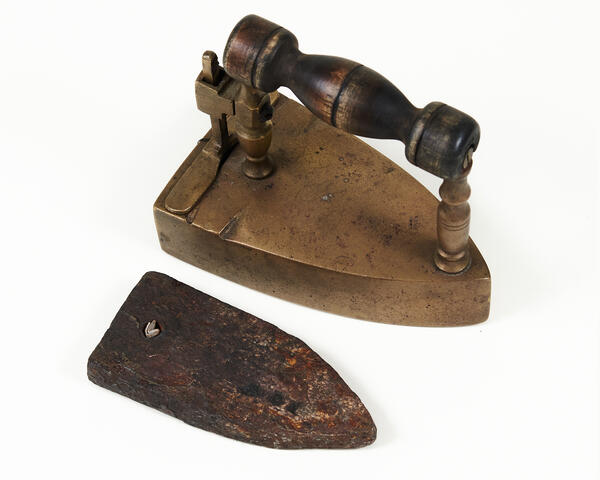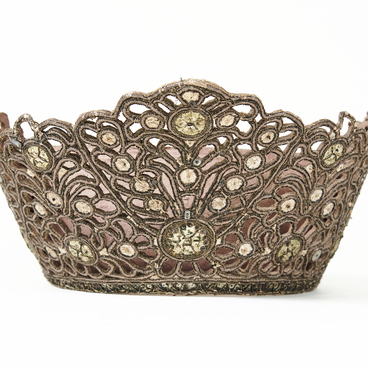Irons with removable heating plates replaced the less convenient and more hazardous charcoal irons. The latter required careful handling to prevent the charcoals from falling out and staining the clothes. After all, the user literally had to hold a miniature red-hot oven in their hands. A removable heating plate offered a solution to this issue. This is how a new type of iron was invented.
It was also more efficient than the earlier stove-heated irons entirely made of metal. They were very inconvenient because the handle would heat together with the iron body. Moreover, when the iron was heated in a fire, soot would form on its plate. A removable plate helped the housewives to avoid this problem.
One iron could have several additional heating plates. As a rule, the user would have to handle them with pliers or hooks, in order to avoid hand burns. While one plate was inside the iron, the other was heated in an oven or on a stove. Of course, such an iron also cost more, as it was made of brass, which was an expensive material. Therefore, an iron of this type was considered a sign of a wealthy family.
For many families, an iron was such a valuable item that it would become an heirloom and was placed on a beautiful napkin near the samovar to decorate the table. Many irons were richly decorated and were seen as elements of interior design. The iron’s handle was covered with drawings and ornaments and inlaid with copper or even silver. Often the iron body itself had exotic shapes, for example, some irons were shaped like a bird.
The iron from the museum’s collection is made of brass. In 19th century Europe and Russia, brass was often used to imitate gold. It was a proper material for an iron. Brass was known as ‘the eternal metal’ because of its durability. Products made of brass remain intact and do not deteriorate over time. This alloy is also widely used by jewelers because of its ductility and ease of processing. Samovars were made of brass in Tsarist Russia: aside from their bright and beautiful appearance, they also warmed up evenly. This property also made brass very useful in the production of irons.
It was also more efficient than the earlier stove-heated irons entirely made of metal. They were very inconvenient because the handle would heat together with the iron body. Moreover, when the iron was heated in a fire, soot would form on its plate. A removable plate helped the housewives to avoid this problem.
One iron could have several additional heating plates. As a rule, the user would have to handle them with pliers or hooks, in order to avoid hand burns. While one plate was inside the iron, the other was heated in an oven or on a stove. Of course, such an iron also cost more, as it was made of brass, which was an expensive material. Therefore, an iron of this type was considered a sign of a wealthy family.
For many families, an iron was such a valuable item that it would become an heirloom and was placed on a beautiful napkin near the samovar to decorate the table. Many irons were richly decorated and were seen as elements of interior design. The iron’s handle was covered with drawings and ornaments and inlaid with copper or even silver. Often the iron body itself had exotic shapes, for example, some irons were shaped like a bird.
The iron from the museum’s collection is made of brass. In 19th century Europe and Russia, brass was often used to imitate gold. It was a proper material for an iron. Brass was known as ‘the eternal metal’ because of its durability. Products made of brass remain intact and do not deteriorate over time. This alloy is also widely used by jewelers because of its ductility and ease of processing. Samovars were made of brass in Tsarist Russia: aside from their bright and beautiful appearance, they also warmed up evenly. This property also made brass very useful in the production of irons.


